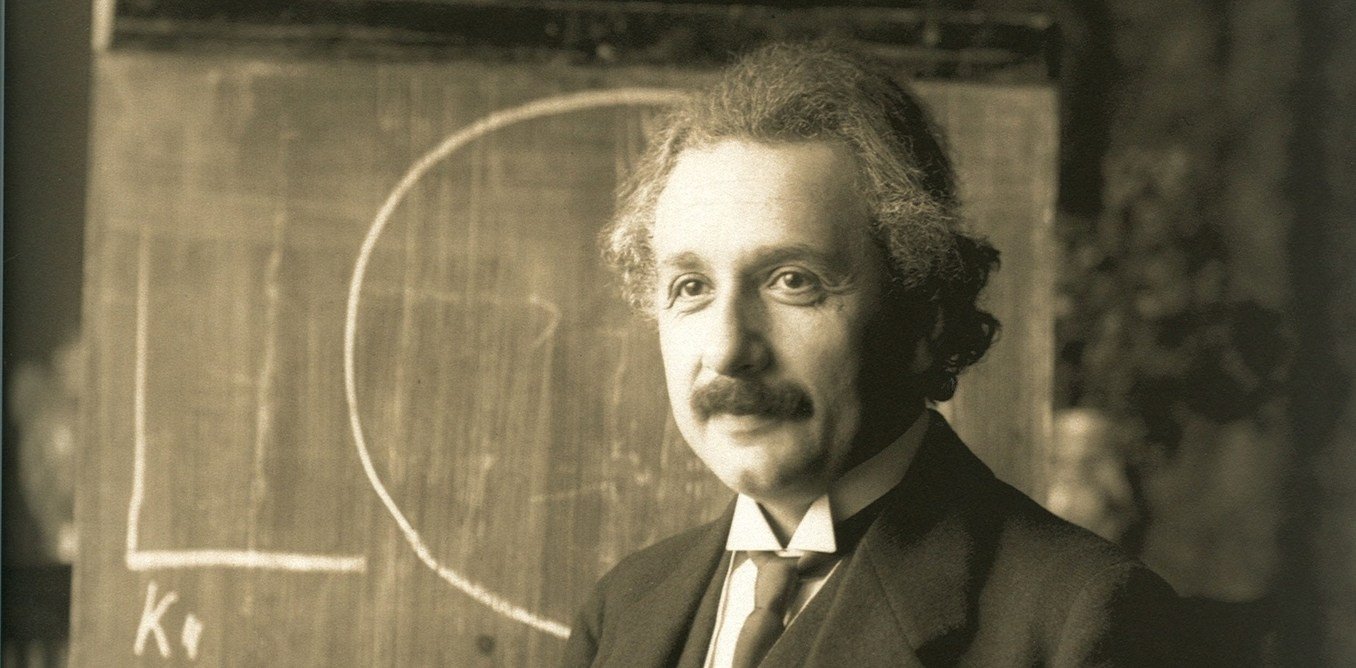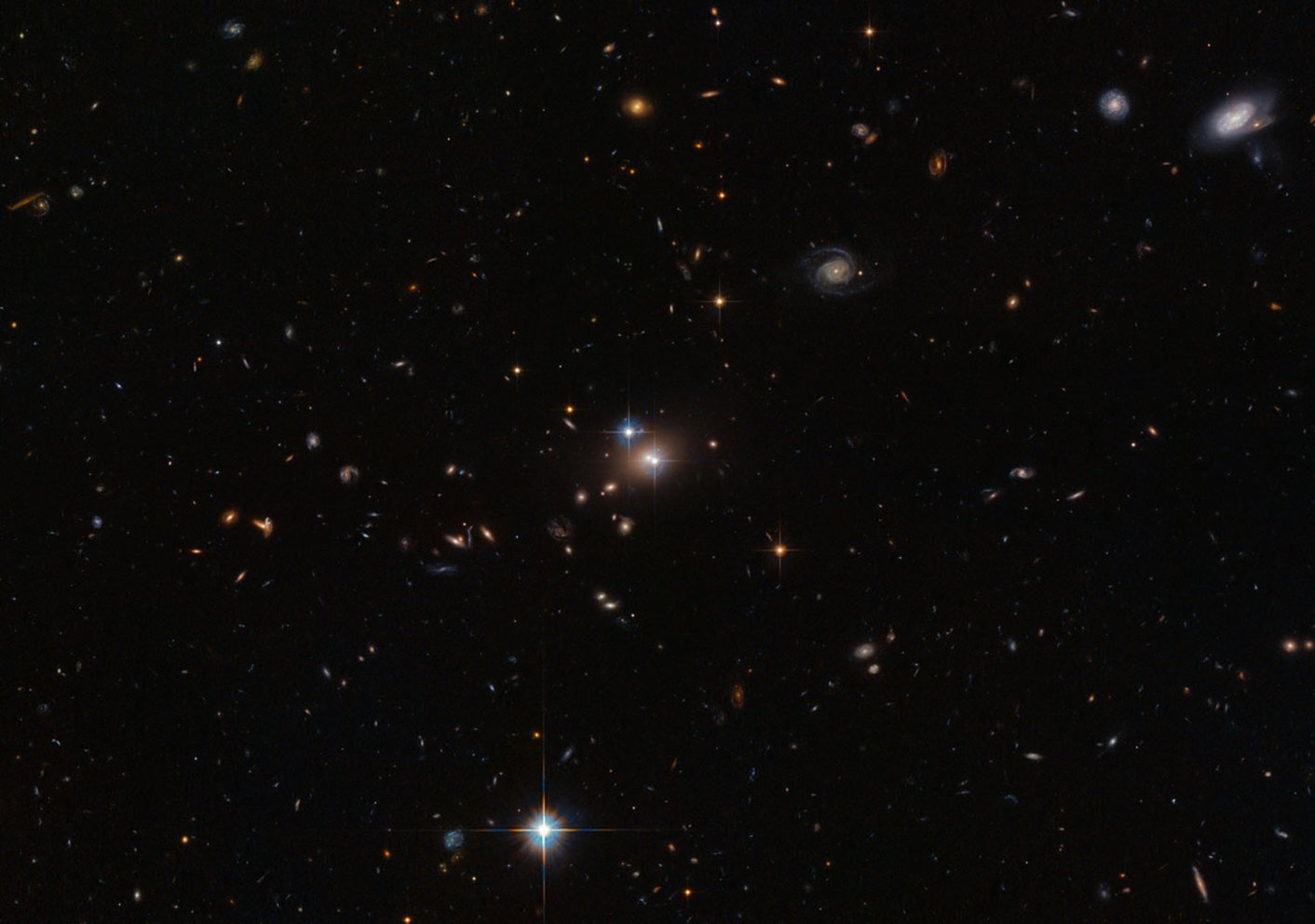Gravity

In 1905, Albert Einstein turned the world of theoretical physics upside down publishing work on a discipline that would later be called General theory of relativity. It showed that space and time can not be regarded as absolute entities: time can accelerate or slow down, standard lengths can contract, masses can increase.
And, the most famous result, the equivalence of the mass of energy, and their proportion is expressed in terms of The equation E = mc².
No one doubts the genius of Einstein who formulated GTR, but it is commonly believed that if he had not published his theory in 1905, some other physicist would soon have done it instead of him.

“Einstein’s Cross” – four images of one remote quasar, obtained because the light from it bends around a galaxy closer to us, working as a gravitational lens.
Only in 1915 Einstein demonstrated his genius by publishing his general theory of relativity. She claimed that the curvature of space-time is proportional, and also occurs due to the “energy-momentum density”, that is, the energy and momentum associated with any matter in a unit of volume space.
This statement was confirmed when it Coincided with observations of the unusual orbit of Mercury and with the light of stars curving around the Sun.
Over the past hundred years, the UTO has been verified with stunning accuracy and each time stood the test. GRT has become such a giant leap forward that it can be said that if Einstein did not formulate it, it could remain undiscovered for a long time.
The way to the general theory of relativity
In 1907, Einstein received the “happiest thought of his whole life” when he was sitting on a chair in the patent office in Bern:
If a person falls freely, he does not feel his weight.
She led him to the formulation of the “equivalence principle”, which states that it is impossible to distinguish between an accelerating frame of reference and a gravitational field. For example, if you are standing on Earth, this will be felt exactly as if you were standing in a spaceship moving at an acceleration of 9.81 m / s² – with acceleration of gravity on the Earth.
This was the first major Step to the formulation of a new theory of gravity.
Einstein believed that “all physics is geometry.” He meant that you can think of space-time and the universe in geometric terms. The most surprising conclusion of GRT, the dynamic nature of time and space, apparently led Einstein to the need to rethink the “geometric” space-time.
Einstein conducted a series of neat mental experiments comparing observations made by observers in inertial and rotating systems
He established that for an observer in a rotating frame of reference, space-time can not be Euclidean, that is, such as the flat geometry that we all study in schools. We need to introduce “curved space” into the argument to take into account the anomalies predicted by relativity. Curvature becomes the second most important supposition supporting its general relativity.
To describe the curved space Einstein turned to the earlier work of Bernard Riemann, a mathematician of the XIX century. With the help of his friend Marcel Grossman, also a mathematician, Einstein studied the mathematics of curved spaces for a few tedious years-what mathematicians call “differential geometry.” Einstein noted that “compared with the understanding of gravity, the special theory of relativity seemed like a child’s toy.”
Now Einstein had a mathematical apparatus for bringing the theory to completion. The equivalence principle claimed that the accelerating frame of reference is equivalent to the gravitational field. As a result of studying geometry, he believed that the gravitational field was a simple manifestation of the curved space-time. Therefore, he could show that the accelerating frames of reference were non-Euclidean spaces.
Development
The third most important step was the elimination of complexities in the application of general relativity to Newtonian gravity. In the special theory of relativity, the constancy of the speed of light in all frames of reference and the assertion that the speed of light is the maximum achievable speed contradicted the Newtonian theory of gravity postulating the instantaneous action of gravity.
Simply put, Newtonian gravity said that if you remove the Sun from the center The solar system, the gravitational effect of this event will instantly be felt on Earth. But SRT says that even the effect of the disappearance of the Sun will move with the speed of light.
Einstein also knew that the gravitational attraction of two bodies is directly proportional to their masses, which followed from the Newtonian F = G * M * m / r². Therefore, the mass clearly determined the strength of the gravitational field. SRT says that the mass is equivalent to energy, so the energy-momentum density must also determine the force of gravity.
As a result, the three key assumptions used by Einstein for the formulation of his theory were:
1. In rotating (non-inertial) frames of reference, space is curved (non-Euclidean).
2. The equivalence principle says that accelerating frames of reference are equivalent to gravitational fields.
3. From the SRT follows the equivalence of mass and energy, and from Newtonian physics it follows that the mass is proportional to the force of gravity.
Einstein was able to conclude that the energy-momentum density creates, and is proportional to, the curvature of space-time.
It is not known when he had an “illumination” when he was able to lay down this puzzle and connect mass / energy with the curvature of space.
From 1913 to 1915, Einstein published several works while working on the completion of general relativity. In some works there were mistakes, because of which Einstein spent time on unnecessary distractions in theoretical reasoning.
But the final result is that the energy-momentum density curves the space time, like a bowling ball – a stretched rubber sheet, and that The motion of the mass in the gravitational field depends on the curvature of space-time – this is without a doubt the greatest conjectures made by the human intellect.
The handicap
How long would we deal with gravity, do not be with us the genius of Einstein? It is possible that we had to wait for this many decades. But in 1979, the mystery would surely come out. In that year, astronomers discovered “quasars-twins”, QSO 0957 + 561, the first quasar on which gravitational lensing was observed.

This amazing discovery can only be explained by the curvature of space-time. For him probably would have been given a Nobel Prize, if not for the genius of Einstein. Or maybe it’s still worth betraying.








